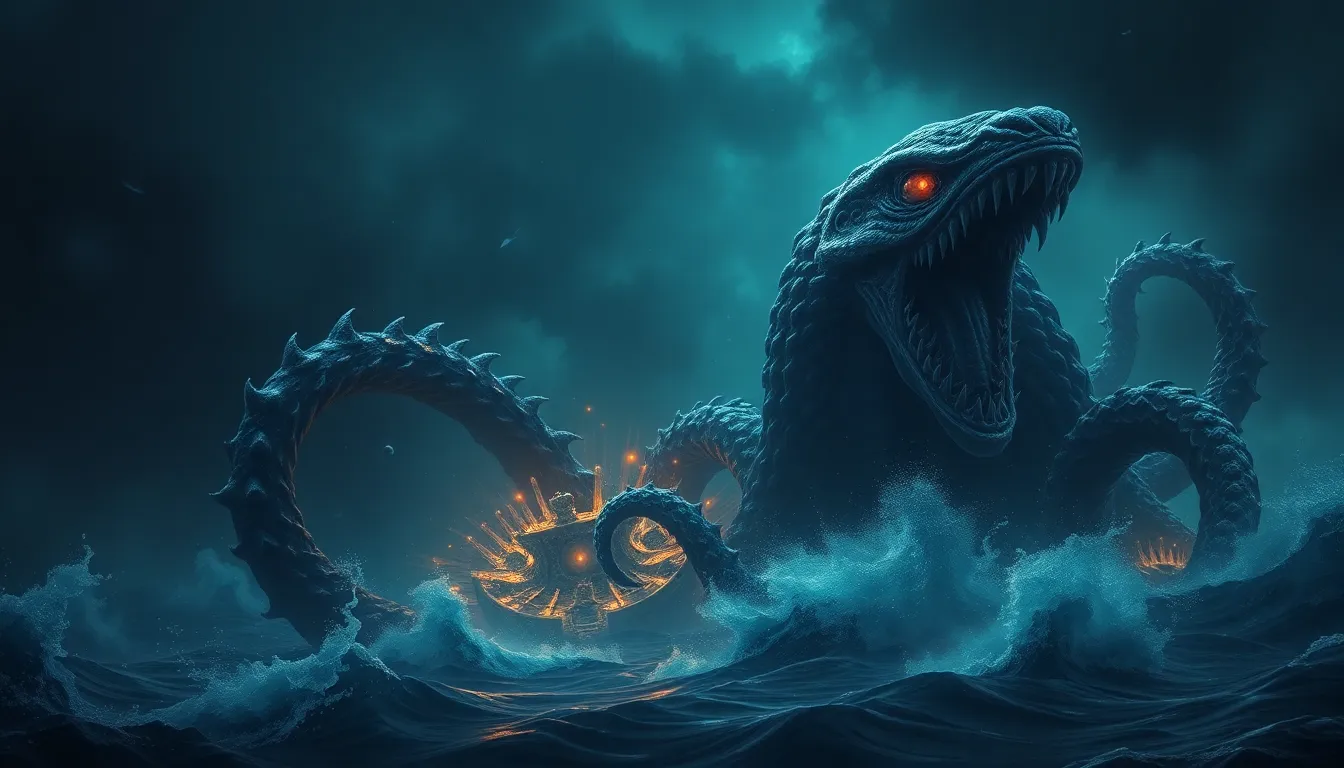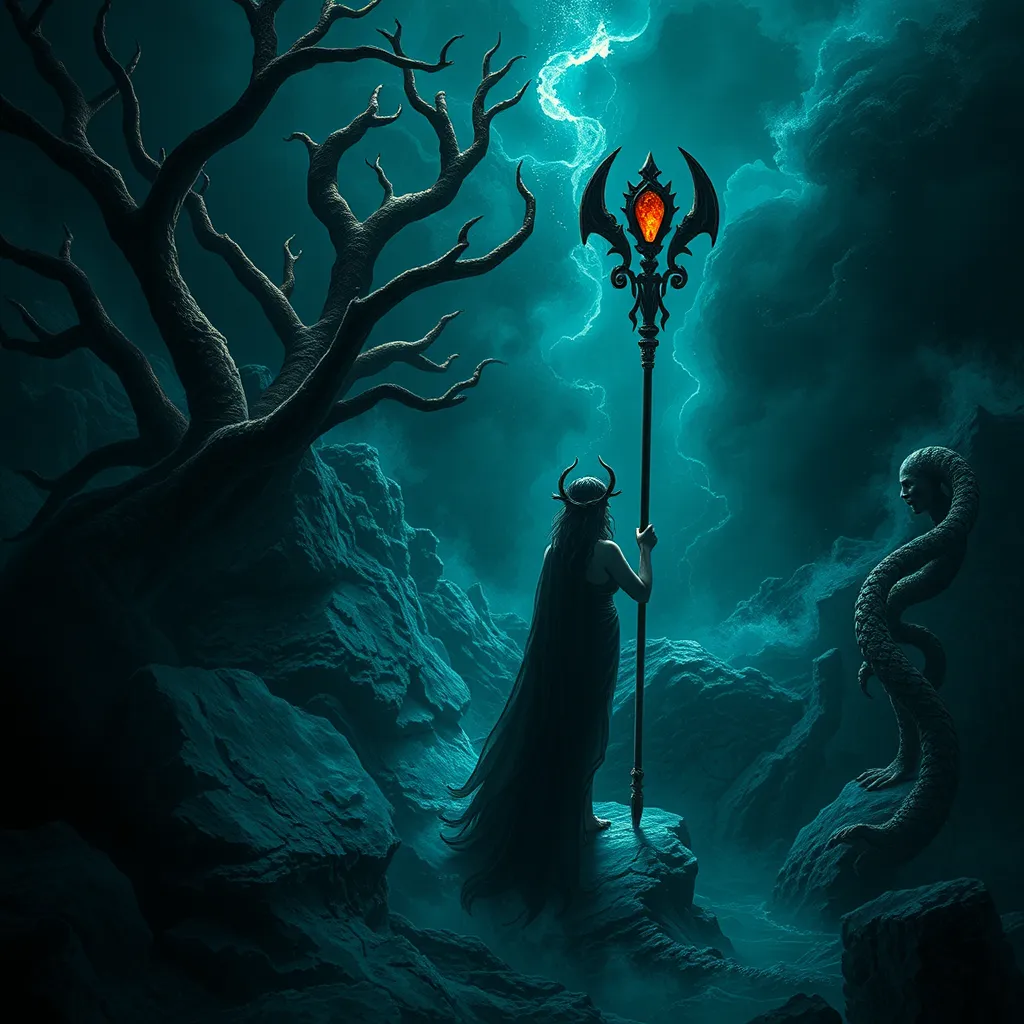Echidna and the Hero: Exploring the Encounters Between the Serpent-Woman and Mythological Heroes
I. Introduction
Echidna, often referred to as the “Mother of Monsters,” figures prominently in Greek mythology as a fearsome creature with a unique hybrid form—part woman, part serpent. Her character serves as a pivotal point for numerous mythological narratives, intertwining with the journeys of various legendary heroes. The encounters between Echidna and these heroes not only highlight her significance but also explore themes of conflict, power, and identity within mythological frameworks. This article aims to delve into the complexities of Echidna’s character and her consequential interactions with notable heroes of Greek mythology.
II. Understanding Echidna: The Mother of Monsters
A. Origins and characteristics of Echidna
Echidna is described in various sources as a monstrous being, often depicted with the upper body of a beautiful woman and the lower body of a serpent. According to Hesiod’s “Theogony,” she is the daughter of Gaia and Tartarus, emphasizing her primordial nature and her connection to the earth and the underworld.
B. Her role in Greek mythology
Echidna is not merely a monster; she is a progenitor of many legendary beasts, including the Chimera, the Nemean Lion, and the Hydra. Her role as a mother figure to these creatures positions her as a central figure in the tale of heroism, often serving as the antagonist that heroes must confront and conquer.
C. The symbolism of the serpent-woman
The image of Echidna as a serpent-woman symbolizes duality—beauty and terror, femininity and monstrosity. This duality invites various interpretations, reflecting cultural anxieties about female power and the natural world. Echidna embodies the chaos that heroes must tame, representing the untamed aspects of nature and femininity that challenge societal norms.
III. The Heroes of Greek Mythology
A. Overview of key mythological heroes
Greek mythology boasts numerous heroes, each characterized by their unique strengths and stories. Key figures include:
- Heracles: Known for his incredible strength and his completion of the Twelve Labors.
- Perseus: Famous for slaying the Gorgon Medusa and rescuing Andromeda.
- Theseus: Renowned for defeating the Minotaur and navigating the Labyrinth.
B. Common traits and themes among these heroes
These heroes often share common traits such as bravery, intelligence, and a strong sense of justice. Their stories frequently involve themes of:
- Overcoming insurmountable odds
- The quest for identity and honor
- Confrontations with monstrous beings
C. The significance of their encounters with female figures
Female figures in mythology are often portrayed as both adversaries and allies. The encounters between heroes and these women, such as Echidna, can signify deeper cultural narratives about gender roles, power dynamics, and the balance between civilization and chaos.
IV. Echidna’s Encounters with Heroes
A. The story of Heracles and the Nemean Lion
1. Echidna’s connection to the beast
The Nemean Lion, one of the most formidable foes in Heracles’ Twelve Labors, is said to be a spawn of Echidna. This connection underscores her role as a mother of monsters and establishes a direct link between her and the hero’s quest.
2. Heracles’ triumph and its implications
Heracles’ triumph over the Nemean Lion is significant. By defeating this beast, he not only proves his strength but also symbolizes the conquest of chaos and primal fears. This victory further solidifies his identity as a hero, reinforcing the idea that true heroism involves confronting and overcoming the monstrous aspects of existence.
B. The tale of Perseus and the Gorgon
1. Echidna’s influence in the story
While Echidna does not directly confront Perseus, her offspring, the Gorgon Medusa, serves as a critical challenge in his journey. The presence of such monstrous beings reflects Echidna’s legacy and the continuous cycle of hero versus monster in mythology.
2. The hero’s journey and its challenges
Perseus’ quest to slay Medusa and retrieve her head is fraught with challenges that test his courage and wits. The narrative embodies the theme of transformation, as Perseus evolves from a mere mortal into a legendary hero through his trials, influenced by the monstrous lineage of Echidna.
V. Themes of Conflict and Conquest
A. The significance of hero versus monster narrative
The hero versus monster narrative is a prevalent theme in mythology, symbolizing the struggle between civilization and chaos. Echidna’s role as the mother of monsters highlights the importance of these conflicts in shaping heroic narratives.
B. The role of Echidna in shaping heroic identities
Echidna’s encounters with heroes serve as catalysts for their development. By confronting her and her offspring, heroes like Heracles and Perseus not only demonstrate their valor but also forge their identities through the trials they face.
C. Exploration of power dynamics in their encounters
The dynamic between Echidna and the heroes often reflects broader societal themes regarding power. The struggles between these figures can be seen as allegories for the tension between masculine and feminine forces, order and chaos.
VI. The Legacy of Echidna in Mythology
A. How Echidna’s character has evolved over time
Over the centuries, Echidna’s character has evolved from a mere antagonist to a more complex figure representing the duality of femininity. Scholars and modern interpretations often explore her as a symbol of feminist power and resistance against patriarchal narratives.
B. Influence on later mythological narratives
Echidna’s legacy can be seen in various mythological narratives beyond Greek mythology, influencing stories of monstrous femininity and the archetype of the mother of monsters across cultures.
C. Comparison with other mythological figures
When compared to figures like Medusa or Lilith, Echidna embodies similar themes of monstrous femininity and the fear of female power. Each of these figures challenges the traditional narratives of heroism and femininity, creating a rich tapestry of interpretation.
VII. Modern Interpretations of Echidna and Hero Encounters
A. Representation of Echidna in contemporary media
In modern storytelling, Echidna appears in various forms, from literature and films to video games. Her character often serves as a symbol of female empowerment, challenging the traditional hero’s journey narrative.
B. The relevance of her story in modern storytelling
The story of Echidna resonates with contemporary audiences, reflecting ongoing discussions about gender, power, and the nature of monstrosity. Her character invites reinterpretation and exploration in various narratives across genres.
C. Analysis of feminist interpretations
Feminist interpretations of Echidna highlight her role as a powerful female figure who defies traditional expectations. By examining her encounters with heroes, scholars explore the complexities of female agency and the ways in which monstrous femininity can challenge patriarchal narratives.
VIII. Conclusion
Echidna’s significance in mythology is profound, serving as a nexus for the exploration of heroism, femininity, and the nature of monstrosity. The encounters between Echidna and heroes like Heracles and Perseus highlight the enduring legacy of these narratives, reflecting the complexities of conflict and identity in both ancient and modern contexts. As we continue to interpret these stories, the character of Echidna remains a compelling symbol of the power dynamics that shape our understanding of mythological heroes and their journeys.



